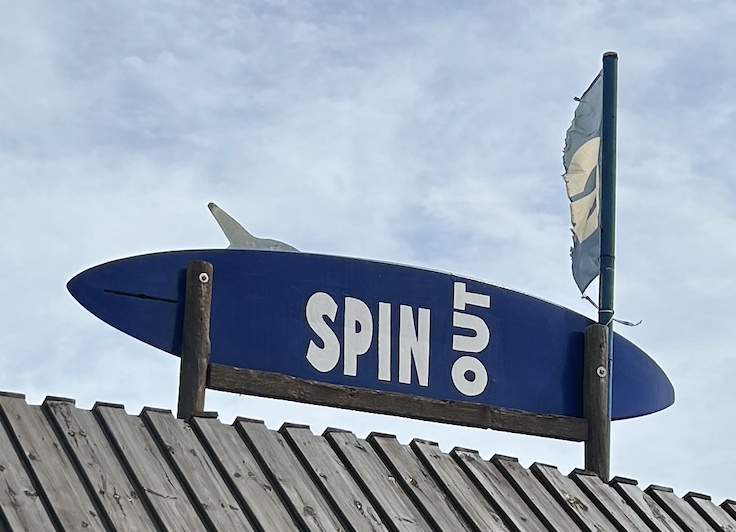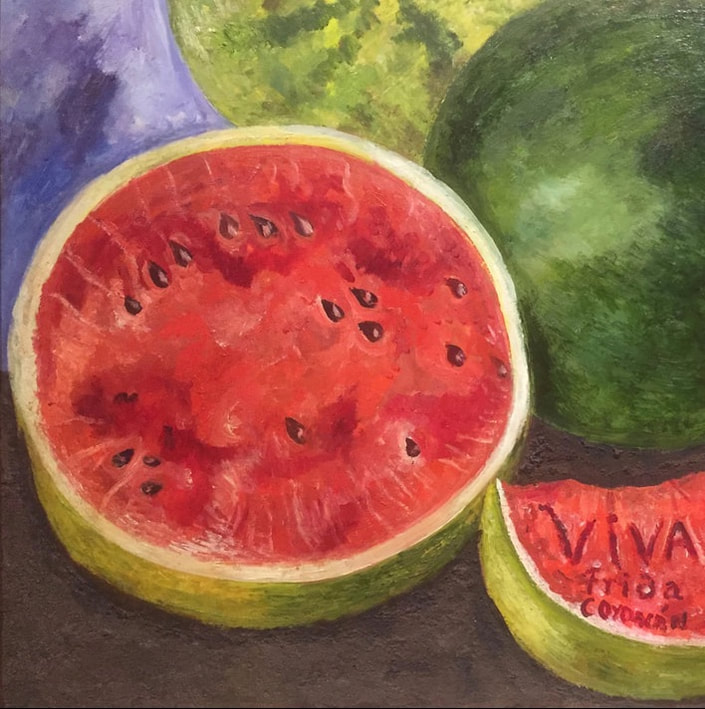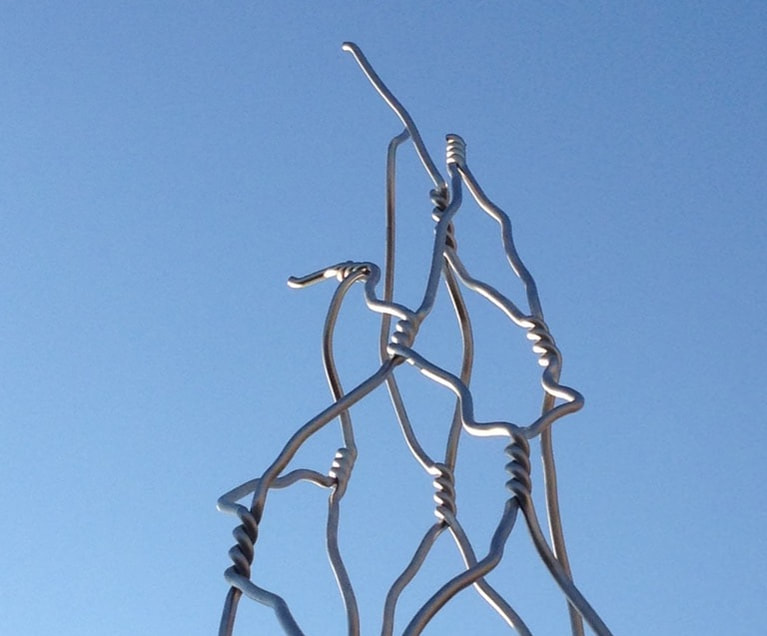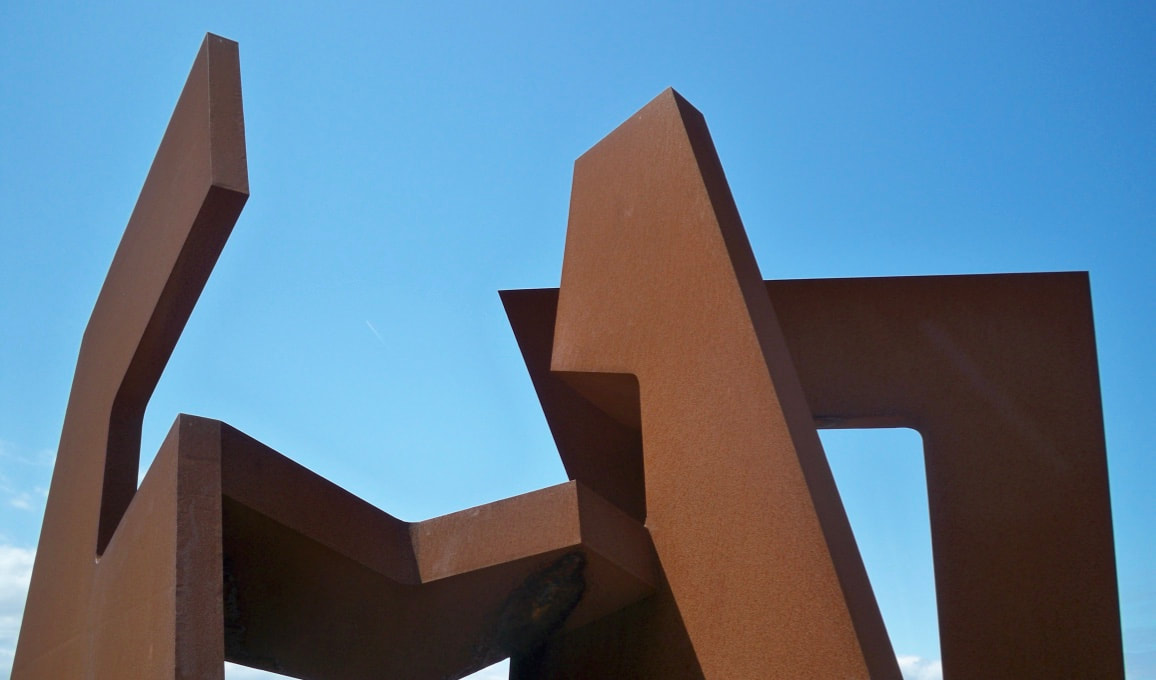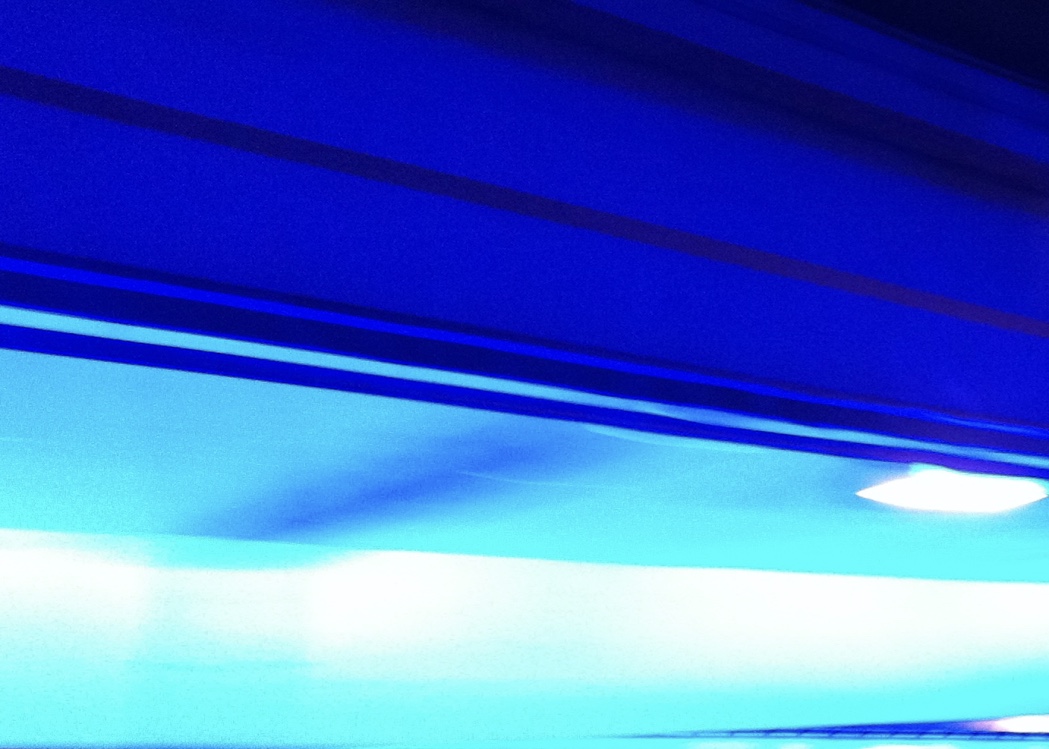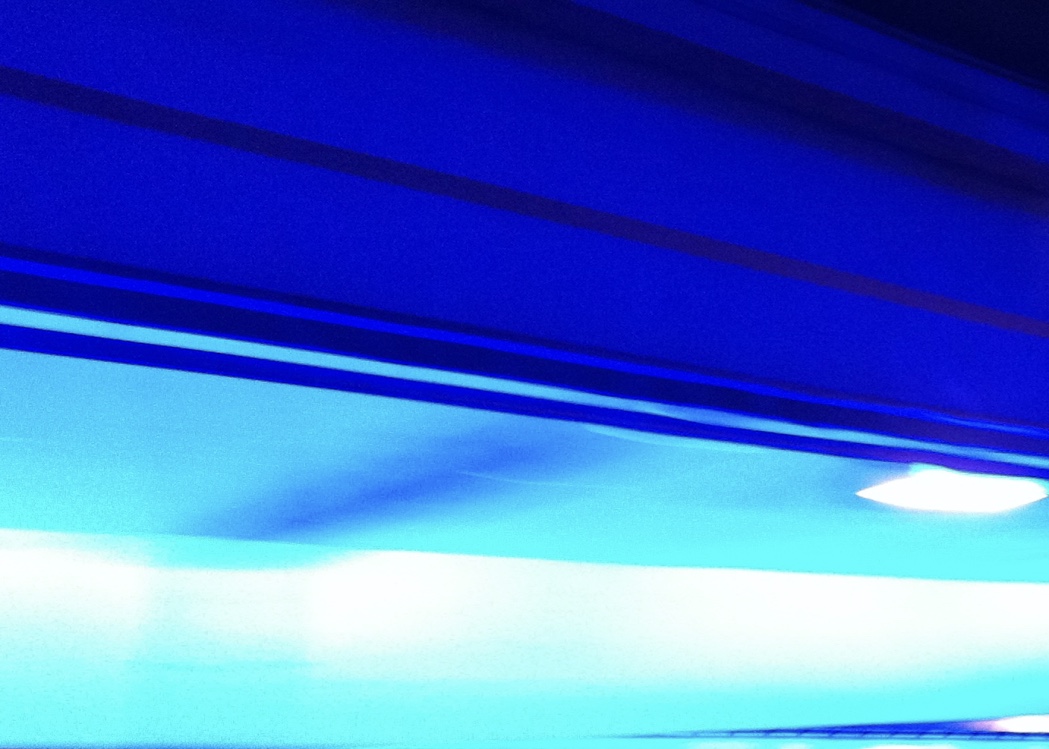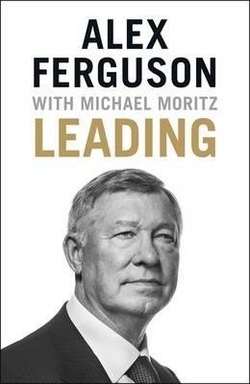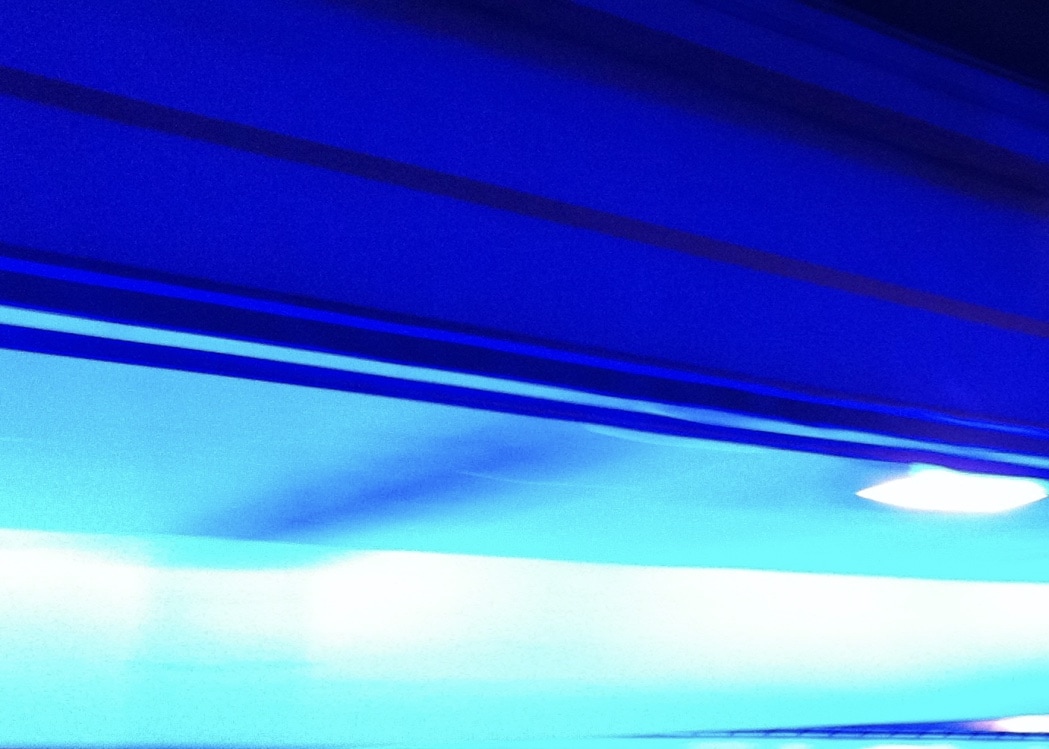On 9 March 2023 the UK Government announced a Review of University Spin-outs. As stated the “review will begin on 9 March and will end in the summer”.
The Report was published today (21 November 2023) thus heralding the end of summer in the small but thriving world of UK university technology transfer. The Report is packed with helpful facts and opinions and makes 11 Recommendations, as follows (in my words, not theirs):
The Report was published today (21 November 2023) thus heralding the end of summer in the small but thriving world of UK university technology transfer. The Report is packed with helpful facts and opinions and makes 11 Recommendations, as follows (in my words, not theirs):
Race, racial diversity, racial inequality and the composition of the boards and senior teams of various organisations is an area of significant interest.
This article is about the composition of the boards and senior teams of various organisations involved in science, research and technology transfer in the UK, from the perspective of race. I have looked at the composition of 48 boards and teams in various organisations and the number of people of colour and the gender balance in these groups; from February 2021 to October 2023. In the UK 18% of the population are people of colour (2021). In early 2021, of the 603 people in the 48 groups I have looked at 6.6% are people of colour; 21 of the 48 groups have no people of colour (44%). In October 2023, the corresponding figures are: of the 586 people in the same 48 groups 10.8% are people of colour; 13 of the 48 groups have no people of colour (27%). The figures are shown in Table 1.
The position now is better than it was two and a half years ago. Is it good? Is it good-enough? It is good the numbers are heading in the right direction. The overall position is not good enough. ....
This article is about the composition of the boards and senior teams of various organisations involved in science, research and technology transfer in the UK, from the perspective of race. I have looked at the composition of 48 boards and teams in various organisations and the number of people of colour and the gender balance in these groups; from February 2021 to October 2023. In the UK 18% of the population are people of colour (2021). In early 2021, of the 603 people in the 48 groups I have looked at 6.6% are people of colour; 21 of the 48 groups have no people of colour (44%). In October 2023, the corresponding figures are: of the 586 people in the same 48 groups 10.8% are people of colour; 13 of the 48 groups have no people of colour (27%). The figures are shown in Table 1.
The position now is better than it was two and a half years ago. Is it good? Is it good-enough? It is good the numbers are heading in the right direction. The overall position is not good enough. ....
“Oh no, not another one! That’s the last thing we need, not another guide!”
This is not yet another guide to spin-outs; it is instead a guide to the existing guides on spin-outs.
In case anyone is thinking of producing a guide to spin-outs (and I know some people out there who are), a good place to start is with one of the existing ones. And then tweak it as little as possible, and present it is as yours, with the necessary and appropriate permissions of course.
Together, these existing guides provide more information than you could ever need on the fine art of spinning-out. It is a good thing there is more than one guide as each is presented from certain specific perspectives: university administration, university researchers, technology transfer offices, lawyers, investors. The voice of the outside entrepreneur-manager is not well represented, and perhaps a guide with their thoughts would be helpful.
In no particular order here are the guides .....
This is not yet another guide to spin-outs; it is instead a guide to the existing guides on spin-outs.
In case anyone is thinking of producing a guide to spin-outs (and I know some people out there who are), a good place to start is with one of the existing ones. And then tweak it as little as possible, and present it is as yours, with the necessary and appropriate permissions of course.
Together, these existing guides provide more information than you could ever need on the fine art of spinning-out. It is a good thing there is more than one guide as each is presented from certain specific perspectives: university administration, university researchers, technology transfer offices, lawyers, investors. The voice of the outside entrepreneur-manager is not well represented, and perhaps a guide with their thoughts would be helpful.
In no particular order here are the guides .....
The chart below shows the technology licensing income from four leading UK university TTO companies over the last eight years, 2015 to 2022 – Oxford, UCL, Cambridge and Edinburgh. Only Oxford has exceeded £20m in a year; this being extraordinary income in 2022 of £145m largely from the Oxford AZ Covid Vaccine licence. UCL looks capable of exceeding £20m. Cambridge and Edinburgh have not reached £5m for quite a few years.
Impact over income, ‘it is not about the money’ as the tech transfer patter goes. If it was the other way around – and for some the money certainly is a major part of it – there would be questions. And perhaps there should be anyway because in this case royalty income is impact – products sold in society, services used in society, medicines taken by patients - the very things that university tech transfer is pursuing.
No UK university tech transfer office company has hit it big on licensing income ...
Impact over income, ‘it is not about the money’ as the tech transfer patter goes. If it was the other way around – and for some the money certainly is a major part of it – there would be questions. And perhaps there should be anyway because in this case royalty income is impact – products sold in society, services used in society, medicines taken by patients - the very things that university tech transfer is pursuing.
No UK university tech transfer office company has hit it big on licensing income ...
If you want something really useful done, go to Cambridge. You don’t have to stay forever, but that’s the place to go. Tomas Coates Ulrichsen and his colleagues at the Policy Evidence Unit for University Commercialisation and Innovation (UCI) published a great report earlier this year “Busting Myths and Moving Forward - The reality of UK university approaches to taking equity in spin outs”.
To quote from the Report: “We urgently need to move beyond a singular focus on the amount of equity a university takes in its spinouts at foundation.” “Other critical barriers are much more structural and harder to overcome.”
Other barriers are described as: “license terms and ongoing access to university facilities and expertise, both of which will shape the company’s valuation” - “the ability to de-risk technologies and the business venture sufficiently before having to incorporate and seek investors” - “the ability of spinouts to find sufficient talent and expertise – entrepreneurial, managerial, commercial, technical – in their local economies, and access the necessary facilities and equipment to further their development” - “the investment environment readily accessible to universities and founding teams” - “the availability of resources within universities to support increasing numbers of academics seeking to commercialise their research.”
I fully agree with this. One of the ways that universities can help move the debate on is to have a very clear understanding of their position on a range of practical issues around how they approach supporting and facilitating spin-out company formation. Universities need to know their stuff. This helps because it supports that view everyone needs to move on; if universities are unclear on their position, it will be difficult to move on fully, in the ways the Report quite rightly suggests.
Here is a list of 15 questions that may help to move “urgently beyond” ...
To quote from the Report: “We urgently need to move beyond a singular focus on the amount of equity a university takes in its spinouts at foundation.” “Other critical barriers are much more structural and harder to overcome.”
Other barriers are described as: “license terms and ongoing access to university facilities and expertise, both of which will shape the company’s valuation” - “the ability to de-risk technologies and the business venture sufficiently before having to incorporate and seek investors” - “the ability of spinouts to find sufficient talent and expertise – entrepreneurial, managerial, commercial, technical – in their local economies, and access the necessary facilities and equipment to further their development” - “the investment environment readily accessible to universities and founding teams” - “the availability of resources within universities to support increasing numbers of academics seeking to commercialise their research.”
I fully agree with this. One of the ways that universities can help move the debate on is to have a very clear understanding of their position on a range of practical issues around how they approach supporting and facilitating spin-out company formation. Universities need to know their stuff. This helps because it supports that view everyone needs to move on; if universities are unclear on their position, it will be difficult to move on fully, in the ways the Report quite rightly suggests.
Here is a list of 15 questions that may help to move “urgently beyond” ...
In March 2021, I published an article titled “The White Board”. The article was about the composition of the boards and senior teams of various organisations involved in science, research funding and technology transfer in the UK, from the perspective of race. I looked at the composition of 48 groups in these organisations and the number of people of colour in these groups. In March 2021, of the 603 people in the 48 groups, a total of 40 people, 6.6% were people of colour [that’s about 1 in 15 people; against a national population of 13% people of colour in the 2011 Census (about 1 in 8 people), updated by ONS in 2019 to 15% (1 in 7)]; 21 of the 48 groups had no people of colour (44%). This was a real surprise; but then again ... maybe not. British science appears remarkably white, with a severe lack of racial diversity in some really important places. I ended the article asking - ‘In a year’s time, what will the position look like?’
One year later, I have looked at the same 48 groups again. There has been an overall improvement in racial diversity across the 48 groups, which shows that changes can be made, diversity can be increased. Of the 598 people in the same 48 groups, 9.9% are people of colour (that’s about 1 in 10 people); although 19 of the 48 groups have no people of colour (40%). Nineteen of the forty-eight groups have no people of colour. Nineteen of the forty-eight groups have no people of colour.
The membership of the leadership and senior teams in any organisation is so important; people look up; and what do they see? For the groups resolutely lacking racial diversity, what are they doing? Are they trying hard and not getting there yet? Are they so clever they think it doesn’t matter? ...
One year later, I have looked at the same 48 groups again. There has been an overall improvement in racial diversity across the 48 groups, which shows that changes can be made, diversity can be increased. Of the 598 people in the same 48 groups, 9.9% are people of colour (that’s about 1 in 10 people); although 19 of the 48 groups have no people of colour (40%). Nineteen of the forty-eight groups have no people of colour. Nineteen of the forty-eight groups have no people of colour.
The membership of the leadership and senior teams in any organisation is so important; people look up; and what do they see? For the groups resolutely lacking racial diversity, what are they doing? Are they trying hard and not getting there yet? Are they so clever they think it doesn’t matter? ...
In November 2021, UKRI published a report showing that ‘Disclosures’ to Technology Transfer Offices at Universities in England had fallen by 18% over the five-year period from 2015 to 2020. All the other TT indicators (patenting licensing, income etc.) have gone up. In a Report where all the other graphs are going up, the one going down attracts attention. What’s going on?
This article looks at the data for Disclosures - as they are, and proportionate to research activity, to research staff numbers, and to patent applications; and provides observations about the data collection, the definitions used, and the increase in non-patentable Disclosures. [Warning - this is fairly techy stuff, lots of TT detail, jargon etc.]
The variations in practice amongst TTOs and the questionnaire definitions in the data collection survey render much of the UKRI HEBCI HESA TT data far less useful than it could be, which is unfortunate, a missed opportunity, and a real concern if the data is to be used to determine the allocation of government funding to universities under HEIF and KEF. Opportunities to understand patterns on UK university Technology Transfer activity in the last twenty years have been lost due to poor data collection and variable approaches to reporting (understandable given the poor definition of questions). Maybe it is time for the sector to get more involved in the data collection and reporting as in the US, and elsewhere ....
This article looks at the data for Disclosures - as they are, and proportionate to research activity, to research staff numbers, and to patent applications; and provides observations about the data collection, the definitions used, and the increase in non-patentable Disclosures. [Warning - this is fairly techy stuff, lots of TT detail, jargon etc.]
The variations in practice amongst TTOs and the questionnaire definitions in the data collection survey render much of the UKRI HEBCI HESA TT data far less useful than it could be, which is unfortunate, a missed opportunity, and a real concern if the data is to be used to determine the allocation of government funding to universities under HEIF and KEF. Opportunities to understand patterns on UK university Technology Transfer activity in the last twenty years have been lost due to poor data collection and variable approaches to reporting (understandable given the poor definition of questions). Maybe it is time for the sector to get more involved in the data collection and reporting as in the US, and elsewhere ....
A few questions as 2021 comes to an end. Some but not all about university technology transfer.
What do you do?
“What do you do?” - “I work in University Technology Transfer” - “What’s that?”
In the old days this could be a difficult question to answer, as many people were unfamiliar with the brilliant research going on in universities, and how some of it is transferred to companies who develop the research outputs into products and services that people want.
The pandemic has provided the perfect answer to this common exchange, as Technology Transfer (TT) people can now tell the story of the Oxford AstraZeneca vaccine, researched in university laboratories, and licensed to a major pharmaceutical company for development, distribution and delivery - to millions of people. Or the story of the UCL-Ventura breathing device, the Norwegian NTNU COVID test technology, or ... the amazing story from your university, of university research outputs being transferred to business to be developed into products and services that benefit society ...
What do you do?
“What do you do?” - “I work in University Technology Transfer” - “What’s that?”
In the old days this could be a difficult question to answer, as many people were unfamiliar with the brilliant research going on in universities, and how some of it is transferred to companies who develop the research outputs into products and services that people want.
The pandemic has provided the perfect answer to this common exchange, as Technology Transfer (TT) people can now tell the story of the Oxford AstraZeneca vaccine, researched in university laboratories, and licensed to a major pharmaceutical company for development, distribution and delivery - to millions of people. Or the story of the UCL-Ventura breathing device, the Norwegian NTNU COVID test technology, or ... the amazing story from your university, of university research outputs being transferred to business to be developed into products and services that benefit society ...
This article describes in outline the three ways that people in TT can think about EDI (Equality, Diversity, Inclusion) activities. TT is very well-placed to have a positive influence on EDI because of the nature of TT activities - very broad based research outputs and involving many different people and groups in the innovation community.
1. In your TTO
This is all about the employment and management practices of your TTO and the work-place culture. Does your TTO have an EDI-minded approach to recruitment, progression, leadership, and governance? Are under-represented groups represented? Do people understand the difference between diversity and inclusion? What is the gender balance, what is the ethnicity balance?
2. In your institution ...
1. In your TTO
This is all about the employment and management practices of your TTO and the work-place culture. Does your TTO have an EDI-minded approach to recruitment, progression, leadership, and governance? Are under-represented groups represented? Do people understand the difference between diversity and inclusion? What is the gender balance, what is the ethnicity balance?
2. In your institution ...
Race, racial diversity, racial inequality and the composition of the boards and senior teams of various organisations is an area of significant interest.
This article is about the composition of the boards and senior teams of various organisations involved in science, research and technology transfer in the UK, from the perspective of race. I have looked at the composition of 48 boards and teams in these organisations and the number of people of colour and the gender balance in these groups. In the UK 13% of the population are people of colour (2011); of the 603 people in the 48 groups I have looked at 6.6% are people of colour; 21 of the 48 groups have no people of colour (44%).
The article makes reference to the Parker Review, the Green Park review, articles from David Lammy, Diversity UK, the Hamilton Commission, the Runnymede Trust, the 30% Club, and AdvanceHE and their Racial Equality Charter and Athena Swan standards. I have spoken to a small number of people who have experience of the issues involved to help inform this article.
There are 4 sections - Findings, Recent Activity, University Technology Transfer, Other Groups, and What To Do.
1. FINDINGS - Some Data
The 48 groups total 603 people, 40 people of colour (6.6%), 23 men of colour and 17 women of colour; 360 men (60%), 243 women (40%), 337 white men and 226 white women. The groups range in size from 7 people to 29 people ....
This article is about the composition of the boards and senior teams of various organisations involved in science, research and technology transfer in the UK, from the perspective of race. I have looked at the composition of 48 boards and teams in these organisations and the number of people of colour and the gender balance in these groups. In the UK 13% of the population are people of colour (2011); of the 603 people in the 48 groups I have looked at 6.6% are people of colour; 21 of the 48 groups have no people of colour (44%).
The article makes reference to the Parker Review, the Green Park review, articles from David Lammy, Diversity UK, the Hamilton Commission, the Runnymede Trust, the 30% Club, and AdvanceHE and their Racial Equality Charter and Athena Swan standards. I have spoken to a small number of people who have experience of the issues involved to help inform this article.
There are 4 sections - Findings, Recent Activity, University Technology Transfer, Other Groups, and What To Do.
1. FINDINGS - Some Data
The 48 groups total 603 people, 40 people of colour (6.6%), 23 men of colour and 17 women of colour; 360 men (60%), 243 women (40%), 337 white men and 226 white women. The groups range in size from 7 people to 29 people ....
No need to re-invent the wheel, they say; use the ones you’ve got.
This is about the availability and use of standard agreements in university technology transfer and university-business collaboration transactions. Thoughts on this were prompted by two insightful pieces over the end of year holidays from Mark Anderson and his friend IP Draughts in the UK, and Orin Herskowitz at Columbia and his colleagues in the US.
It is an important subject because current transaction time, costs, and friction are too high. The deals which underpin the transfer of technologies from universities to business for development into new products and services that benefit society need to be simplified. Using standards is the way to do this.
IP Draughts
The IP Draughts blog and library of articles is one of the best sources of comment on the legal aspects of university technology transfer. On New Year’s Day the author wrote about using standard, template agreements and concluded ...
This is about the availability and use of standard agreements in university technology transfer and university-business collaboration transactions. Thoughts on this were prompted by two insightful pieces over the end of year holidays from Mark Anderson and his friend IP Draughts in the UK, and Orin Herskowitz at Columbia and his colleagues in the US.
It is an important subject because current transaction time, costs, and friction are too high. The deals which underpin the transfer of technologies from universities to business for development into new products and services that benefit society need to be simplified. Using standards is the way to do this.
IP Draughts
The IP Draughts blog and library of articles is one of the best sources of comment on the legal aspects of university technology transfer. On New Year’s Day the author wrote about using standard, template agreements and concluded ...
A few thoughts as 2020 comes to an end, some about university technology transfer, but not all.
Not frozen, but thinking ...
“Oh, I think your screen’s frozen, what was that, could you repeat ...”
“I am thinking, I paused for a moment, you didn’t miss anything ...”
A couple of the tyrannies of zoom: (1) Punctuality - widespread concern if someone isn’t ‘on’ the call within a few seconds of the allotted time. I remember meetings in offices where people would generally arrive on time, and if someone was not there on the hour (and it seems zoom calls must start on the hour, just like old-fashioned meetings; a friend once held a meeting to start at 11.37 - everyone was early to find out why) it was natural to wait a couple of minutes as more than likely they’d turn up. (2) Thinking - not allowed! A moments reflection, or pause, is quickly jumped on by the signal-strength monitors as a problem. Everyone has had to adapt so much to online life, it seems we still need to read silences better. Maybe they should introduce a new button to show ‘not frozen, but thinking’ ...
Not frozen, but thinking ...
“Oh, I think your screen’s frozen, what was that, could you repeat ...”
“I am thinking, I paused for a moment, you didn’t miss anything ...”
A couple of the tyrannies of zoom: (1) Punctuality - widespread concern if someone isn’t ‘on’ the call within a few seconds of the allotted time. I remember meetings in offices where people would generally arrive on time, and if someone was not there on the hour (and it seems zoom calls must start on the hour, just like old-fashioned meetings; a friend once held a meeting to start at 11.37 - everyone was early to find out why) it was natural to wait a couple of minutes as more than likely they’d turn up. (2) Thinking - not allowed! A moments reflection, or pause, is quickly jumped on by the signal-strength monitors as a problem. Everyone has had to adapt so much to online life, it seems we still need to read silences better. Maybe they should introduce a new button to show ‘not frozen, but thinking’ ...
In 1975 British rock band Supertramp (Breakfast in America, Dreamer … anyone?) launched an album with the title “Crisis? What Crisis?”. In 1979 the same phrase was attached to the thinking of the struggling Labour government and their attitude to the economic malaise of the day; their defeat led to the election of Margaret Thatcher as Conservative Prime Minster for the next 11 years.
Today the question is different – we know there is a crisis, in fact we know there is more than one. The first one that comes to mind is the current COVID-19 pandemic, millions of cases, hundreds of thousands of deaths. This article rehearses the response of university technology transfer offices (TTOs) to the COVID-19 crisis and then also discusses links between technology transfer and two other crises: climate change and racial inequality ....
Today the question is different – we know there is a crisis, in fact we know there is more than one. The first one that comes to mind is the current COVID-19 pandemic, millions of cases, hundreds of thousands of deaths. This article rehearses the response of university technology transfer offices (TTOs) to the COVID-19 crisis and then also discusses links between technology transfer and two other crises: climate change and racial inequality ....
Universities are fulfilling an extremely important role in addressing the coronavirus COVID-19 crisis, and technology transfer has an important part to play in some of this.
1. What are universities doing?
Universities around the world are leading national and international efforts to develop the vaccine that can lead us out of the crisis. They are compiling and providing their substantial laboratory equipment inventories to support national testing programmes, both the tests to know if you have it, and the tests to know if you have had it. They are designing face masks and other forms of personal protective equipment; in many cases they are also using their 3-D printing resources to produce high volumes of these. They are designing ventilators and patient support systems, based on the simplest, most reproducible engineering and design concepts. University academics are frequent commentators on radio and television programmes ...
1. What are universities doing?
Universities around the world are leading national and international efforts to develop the vaccine that can lead us out of the crisis. They are compiling and providing their substantial laboratory equipment inventories to support national testing programmes, both the tests to know if you have it, and the tests to know if you have had it. They are designing face masks and other forms of personal protective equipment; in many cases they are also using their 3-D printing resources to produce high volumes of these. They are designing ventilators and patient support systems, based on the simplest, most reproducible engineering and design concepts. University academics are frequent commentators on radio and television programmes ...
Universities are fulfilling an extremely important role in addressing the coronavirus crisis, and technology transfer is a part of this.
In the UK, researchers at the MRC Centre for Global Infectious Disease Analysis at Imperial College produced the report which finally persuaded the government to get serious about the crisis. Radio and TV channels are full of expert commentary from university academics across virology, epidemiology, history, psychology, engineering. In the US, the Johns Hopkins University Centre for Systems Science and Engineering is leading the world in COVID-19 case and death data collection and presentation. Well-funded high-quality research universities are a major national asset.
Cambridge University, together with the Wellcome Sanger Institute, is coordinating the collaboration between ...
In the UK, researchers at the MRC Centre for Global Infectious Disease Analysis at Imperial College produced the report which finally persuaded the government to get serious about the crisis. Radio and TV channels are full of expert commentary from university academics across virology, epidemiology, history, psychology, engineering. In the US, the Johns Hopkins University Centre for Systems Science and Engineering is leading the world in COVID-19 case and death data collection and presentation. Well-funded high-quality research universities are a major national asset.
Cambridge University, together with the Wellcome Sanger Institute, is coordinating the collaboration between ...
Here are some thoughts on three areas of university technology transfer to ponder over the coming days: office size; conflict management; and changing values.
Q 1: Who decides the size of the Technology Transfer Office in your university?
A: A committee, somewhere inside the university (not the TTO).
In a recent survey of Technology Transfer Office staff over 100% described themselves a ‘busy’ or ‘over-worked’. In a separate survey of university researchers, a large number said they wanted more from their TTO and were sometimes frustrated by the time the TTO takes to get things done.
Generally the researchers in a university want the TTO to be better; the managers in the TTO know that, generally, better means bigger, in terms of larger budgets to manage patent positions for longer, more TT staff to ....
Q 1: Who decides the size of the Technology Transfer Office in your university?
A: A committee, somewhere inside the university (not the TTO).
In a recent survey of Technology Transfer Office staff over 100% described themselves a ‘busy’ or ‘over-worked’. In a separate survey of university researchers, a large number said they wanted more from their TTO and were sometimes frustrated by the time the TTO takes to get things done.
Generally the researchers in a university want the TTO to be better; the managers in the TTO know that, generally, better means bigger, in terms of larger budgets to manage patent positions for longer, more TT staff to ....
March has been a busy month for university technology transfer in the UK. There are four events to draw attention to in particular, they are all connected one way or another, although just how connected is a matter for continued discussion.
The four events are the sale of Oxford University spin-out Nightstar Therapeutics to Biogen for over US$870m, managed by Syncona plc; the decision by Imperial College to bring its technology transfer activities back in-house decades after creating Imperial Innovations Ltd; the slide of the IP Group plc share price below £1.00 on the London Stock Exchange; and Cambridge Innovation Capital raising an additional £150m ....
The four events are the sale of Oxford University spin-out Nightstar Therapeutics to Biogen for over US$870m, managed by Syncona plc; the decision by Imperial College to bring its technology transfer activities back in-house decades after creating Imperial Innovations Ltd; the slide of the IP Group plc share price below £1.00 on the London Stock Exchange; and Cambridge Innovation Capital raising an additional £150m ....
It is Christmas time, time for Christmas-crackers and the sometimes contrived riddles that they contain. There is a popular one that reads as follows:
Q: "Where does a 600-pound gorilla sit?"
A: "Anywhere it wants to."
In 2015, a £320 million pound gorilla landed in Oxford in the form of Oxford Sciences Innovation, a new private company that had been set up to invest in spin-out companies from the University of Oxford. Osi the gorilla thrived in its Oxford habitat, announced a substantial weight gain of £230 million in 2016, and now tips the scales at a whopping £600 million of money raised ....
Q: "Where does a 600-pound gorilla sit?"
A: "Anywhere it wants to."
In 2015, a £320 million pound gorilla landed in Oxford in the form of Oxford Sciences Innovation, a new private company that had been set up to invest in spin-out companies from the University of Oxford. Osi the gorilla thrived in its Oxford habitat, announced a substantial weight gain of £230 million in 2016, and now tips the scales at a whopping £600 million of money raised ....
This article looks at the current practice of a few leading UK universities in the composition of their technology transfer company boards of directors, and to provide some comments on these practices. The article also provides an overview of how knowledge/technology transfer activiities are structured across UK universities.
The table below shows membership of the Boards of Directors of the ....
The table below shows membership of the Boards of Directors of the ....
This article is about commercialisation in the Social Sciences, Humanities and Arts. The academic disciplines involved are variously grouped under the headings of SSHA, AHSS, SSAH, SSH. It is a popular topic.
There is a difference between knowledge transfer in SSHA and commercialisation in SSHA. This article is about commercialisation. Knowledge transfer is broad and includes as wide a range of possible interactions between universities and businesses, foundations, charities, institutions, and governments as you can imagine. Commercialisation in SSHA is narrower than this; it involves trying to make some financial return; there is the whiff of money about the thing ...
There is a difference between knowledge transfer in SSHA and commercialisation in SSHA. This article is about commercialisation. Knowledge transfer is broad and includes as wide a range of possible interactions between universities and businesses, foundations, charities, institutions, and governments as you can imagine. Commercialisation in SSHA is narrower than this; it involves trying to make some financial return; there is the whiff of money about the thing ...
Here are some thoughts on four areas of UK based university technology transfer: experiments; licensing; shareholdings; and what’s next.
1. Experimental models
There are two big experiments in hard-core, commercial technology transfer at the moment; one coming to an end at Imperial College, the other recently started in Oxford ...
1. Experimental models
There are two big experiments in hard-core, commercial technology transfer at the moment; one coming to an end at Imperial College, the other recently started in Oxford ...
The introduction of Impact as a measure of university research excellence in the 2014 Research Excellence Framework (REF) has changed the way universities in the UK think and talk about Technology Transfer. There is now far more emphasis on the impact of university activities on the outside world, and less on the potential income to the university and others from these activities.
To many people involved in technology transfer this is not a change; we have known for decades that technology transfer is not the answer to a university’s finances; and our priorities for decades have been to transfer technology first, and to make money second.
However, this is a change in the thinking of senior ....
To many people involved in technology transfer this is not a change; we have known for decades that technology transfer is not the answer to a university’s finances; and our priorities for decades have been to transfer technology first, and to make money second.
However, this is a change in the thinking of senior ....
I first published this piece in February 2017; this updated version includes new entries KTI, IACHEI and UIIN. Thank you for telling me about these. Are there any others missing?
The university technology transfer community is well served by membership associations and organisations, at the national and international level ....
The university technology transfer community is well served by membership associations and organisations, at the national and international level ....
Isis Innovation was built on the foundation “Isis helps researchers who want help to commercialise the results of their research” (Isis Innovation was renamed Oxford University Innovation in 2016). This approach was in place well before I started working there in 2000; I came to see it as the touchstone for the organisation, and central to a successful university technology transfer programme. It was all about helping researchers do something they wanted to do; they chose, there was no compulsion for researchers to become involved; and crucially they got to decide the definition of ‘help’, not us. ...
Cambridge is very good at broadcasting the dominance of the Cambridge Cluster. The community of people who make up the cluster have come together to collaborate on a number of initiatives.
One great example is the highly impressive Cambridge Cluster Map, showing overall and company specific data for all the companies in the cluster: www.camclustermap.com .
Another example is the use of three, large, memorable, numbers to convey the scale and success of the Cambridge Cluster ...
One great example is the highly impressive Cambridge Cluster Map, showing overall and company specific data for all the companies in the cluster: www.camclustermap.com .
Another example is the use of three, large, memorable, numbers to convey the scale and success of the Cambridge Cluster ...
David Bowie was a great innovator, in music, fashion, intellectual property financing, and in other areas. He once played the role of a man who relied on patents to save his family and planet.
In the film ‘The Man Who Fell to Earth’ released in 1976, David Bowie plays the role of Mr Newton, the man who fell to Earth. Mr Newton’s objective is to make enough money on Earth to travel back to his homeland and save his family and planet from drought. He never makes it back. He embarks on a plan to commercialise a number of patentable inventions, is hugely successful, but is ultimately floored by the ...
In the film ‘The Man Who Fell to Earth’ released in 1976, David Bowie plays the role of Mr Newton, the man who fell to Earth. Mr Newton’s objective is to make enough money on Earth to travel back to his homeland and save his family and planet from drought. He never makes it back. He embarks on a plan to commercialise a number of patentable inventions, is hugely successful, but is ultimately floored by the ...
Many years ago I identified four words beginning with P that accurately sum up the resources a university needs to have in its Technology Transfer Office (TTO). These resources allow the TTO to function adequately, successfully, at all! These 'Four Ps' then formed part of the conversations we had with other TTO’s who visited us at Isis Innovation, the University of Oxford’s TTO where I worked at the time.
The first four P’s were: People, Patent budget, Policies, and Proof-of-Concept funds. ...
The first four P’s were: People, Patent budget, Policies, and Proof-of-Concept funds. ...
I am interested in the idea of different currencies, how they are transferred and how they are exchanged and converted from one to another. Money is one of these currencies, and we all know how this is transferred, traded and exchanged. What is interesting I think are the non-monetary currencies of learning, contacts, friendship, networks, impact, reputation, publicity. This is all particularly relevant in the case of university technology transfer these days with so much uncertainty about metrics and impact; and also in life more generally. I am grateful to my comrades in the field ....
I hope that governments and other commentators will come to understand about dilution and anti-dilution of shares in university spin-out companies. Or, to put it another way: when does 50% = 5%?
A number of universities in the UK take the approach of having the same number of shares as the founding researchers have in a new spin-out company ...
A number of universities in the UK take the approach of having the same number of shares as the founding researchers have in a new spin-out company ...
I hope that business, governments and other commentators will come to learn and understand the difference between university research support activity which includes helping researchers win research funding contracts and collaborations with industry on the one hand, and university technology transfer activities on the other hand which help researchers transfer technologies that belong to the university along the commercial route of technology licensing and spin-out company formation ...
When Football echoes Technology Transfer ...
|
A frequently asked question by visitors at Isis is how do you decide whether to licence a technology to an existing company or set up a new spin-out company to develop the technology? There are many issues to consider in identifying the best route to market for an early stage technology, and many points of view to take into account.
This article discusses some of the factors involved, some of the conventionally held views and then discusses how there may be more similarities than differences. .....
This article discusses some of the factors involved, some of the conventionally held views and then discusses how there may be more similarities than differences. .....
Introduction
This paper describes phases that university technology transfer activities have passed through up to the present day, and suggests possible future developments. One of the conclusions is that some technology transfer offices may close, but only in universities that do not appreciate the non-commercial benefits that come from pursuing the commercial route for transferring technologies from a university.
This article first appeared in LES NOUVELLES, December 2013, p275.
This paper describes phases that university technology transfer activities have passed through up to the present day, and suggests possible future developments. One of the conclusions is that some technology transfer offices may close, but only in universities that do not appreciate the non-commercial benefits that come from pursuing the commercial route for transferring technologies from a university.
This article first appeared in LES NOUVELLES, December 2013, p275.
Introduction
Universities face a choice in deciding whether their Technology Transfer Office (TTO) should be part of the University’s administration, or a separate company. There are then subsequent choices to be made in terms of possible strategic alliances with partners and selling shares in a TTO if it is a company.
There are three general points to make. Good people can make any system work and bad people can make any system fail. Nevertheless, some systems are better than others. The structure a university decides upon will be as much a reflection of what suits that university at that time, based upon the personal experiences of the decision makers involved. Whichever system is adopted the TTO must always remember its role within the University ...
Universities face a choice in deciding whether their Technology Transfer Office (TTO) should be part of the University’s administration, or a separate company. There are then subsequent choices to be made in terms of possible strategic alliances with partners and selling shares in a TTO if it is a company.
There are three general points to make. Good people can make any system work and bad people can make any system fail. Nevertheless, some systems are better than others. The structure a university decides upon will be as much a reflection of what suits that university at that time, based upon the personal experiences of the decision makers involved. Whichever system is adopted the TTO must always remember its role within the University ...
Technology Transfer Innovation Ltd © COPYRIGHT 2023. ALL RIGHTS RESERVED.


